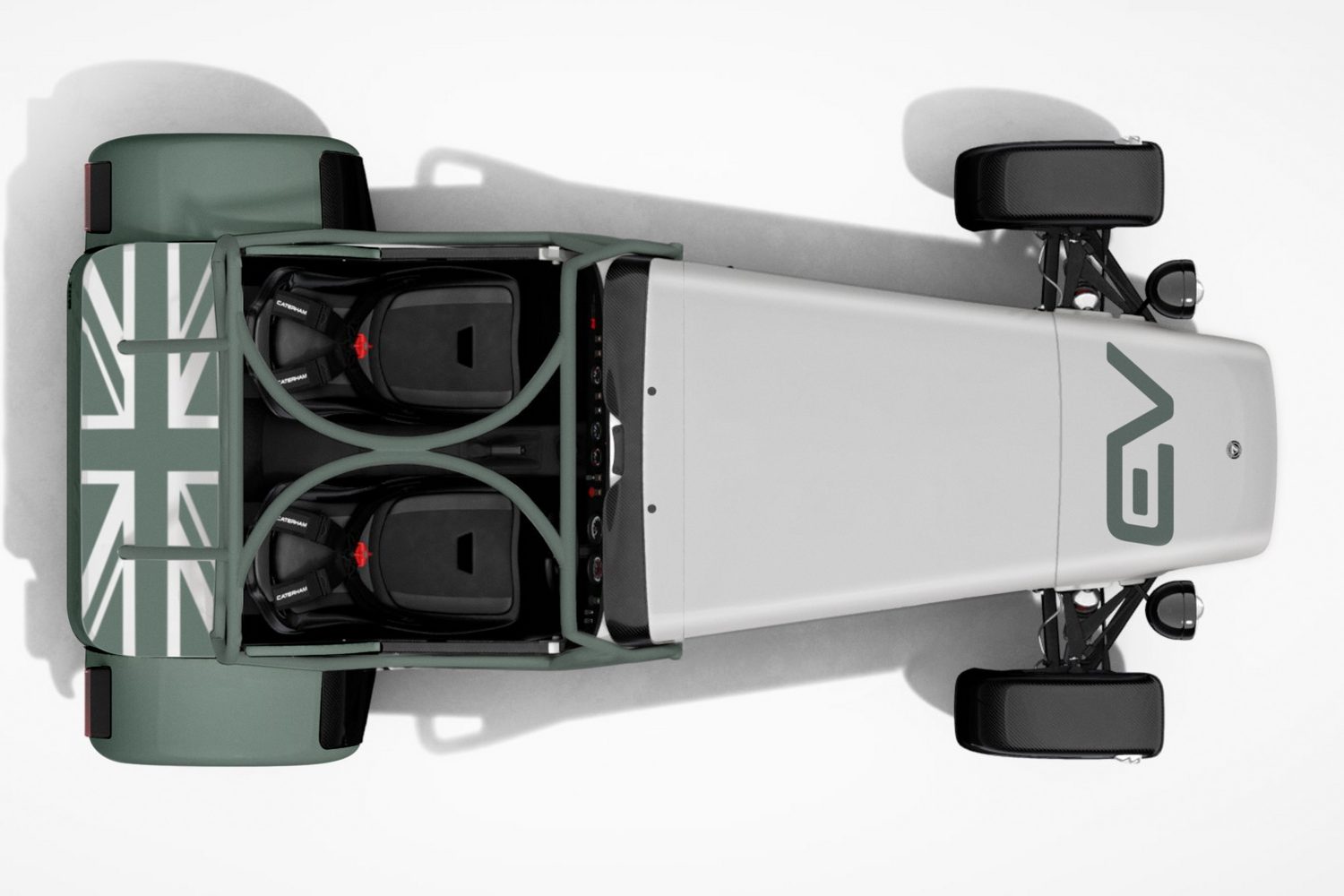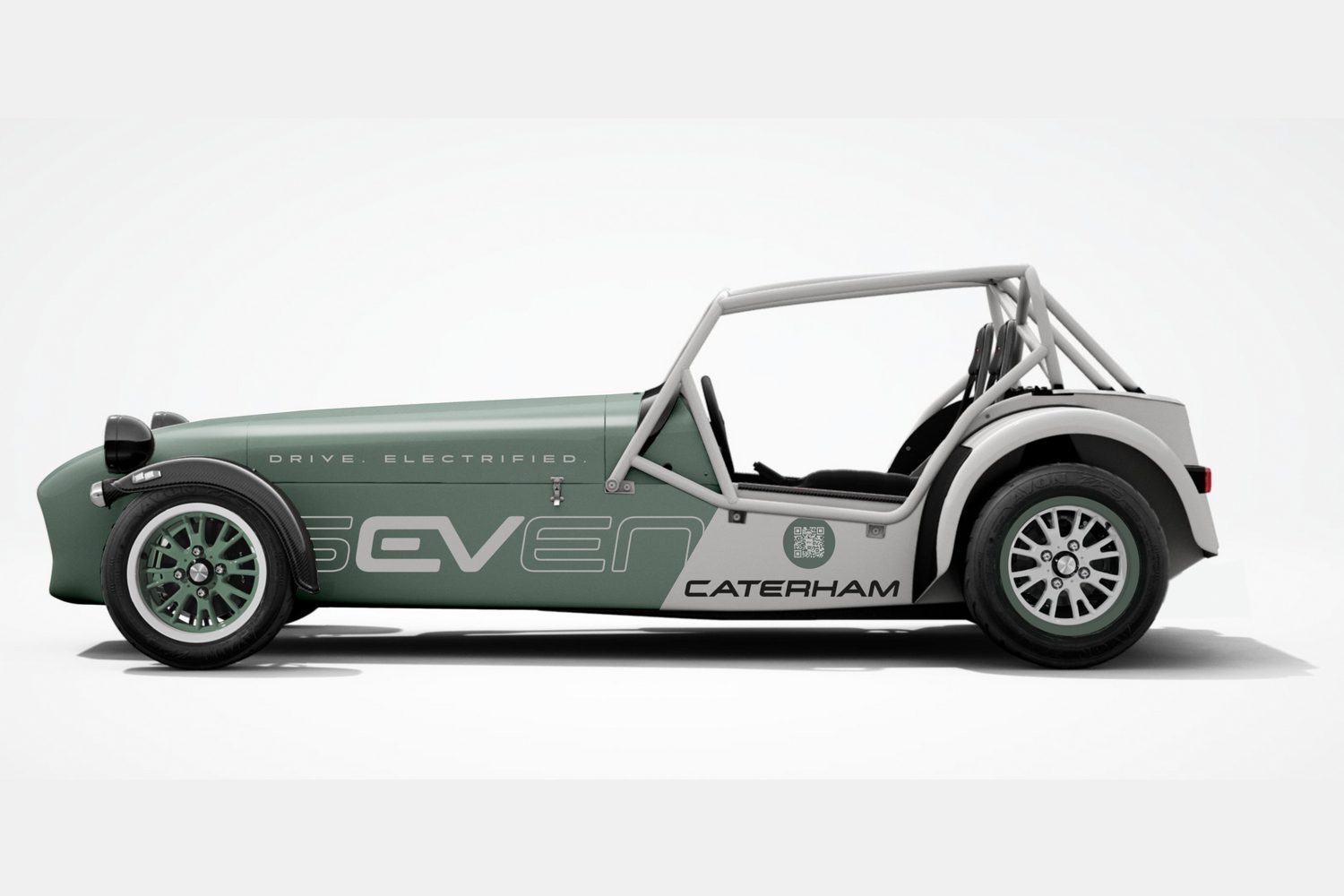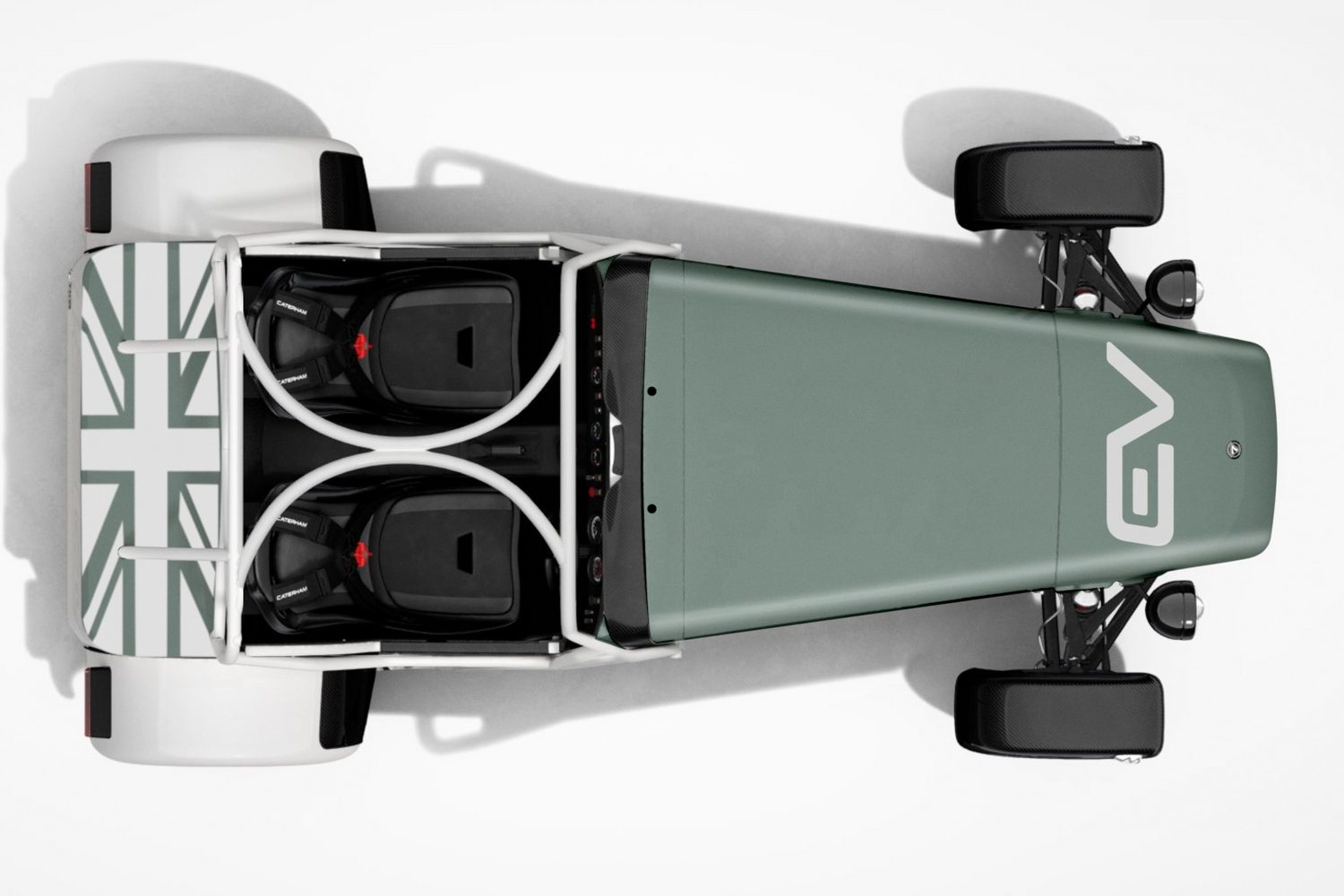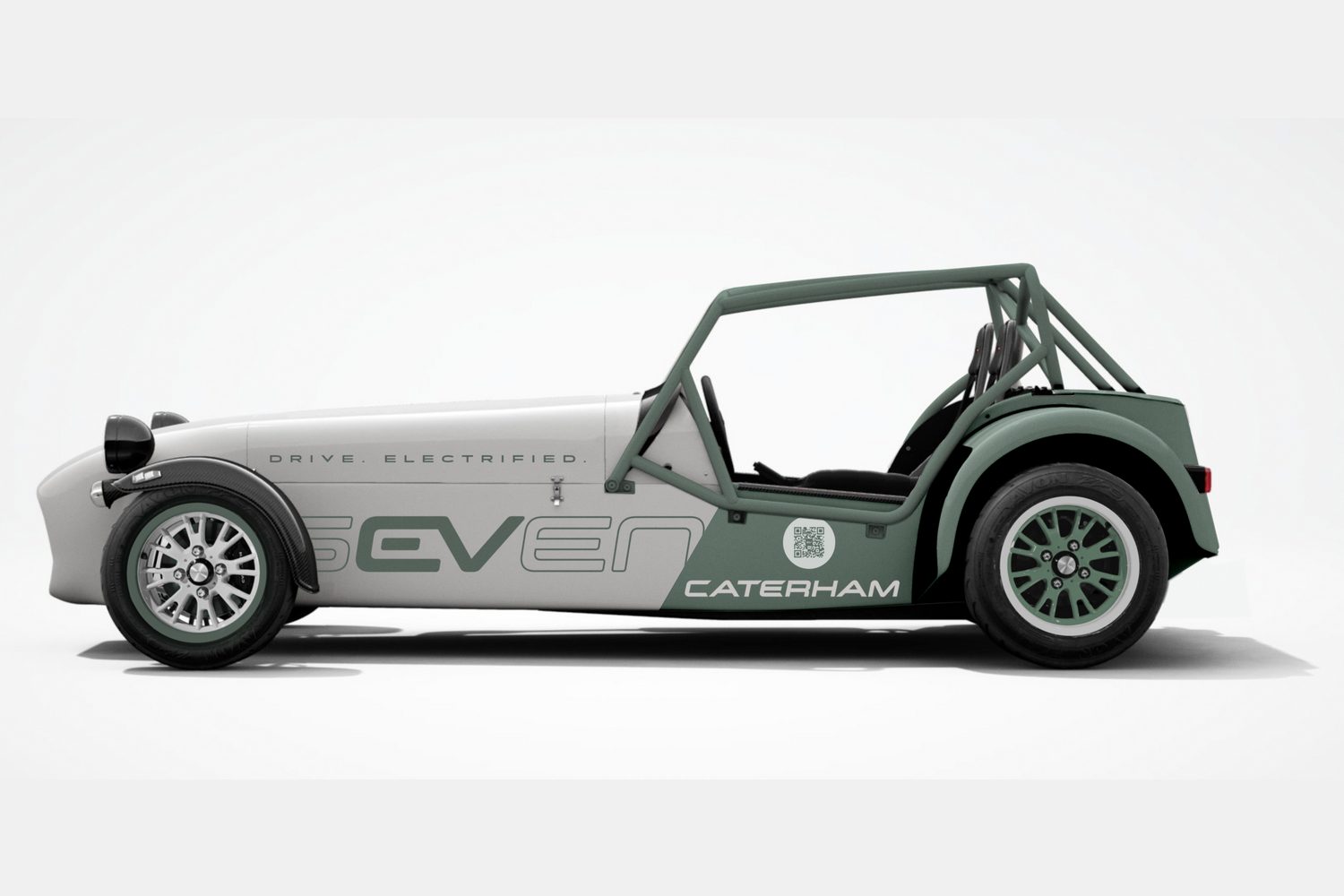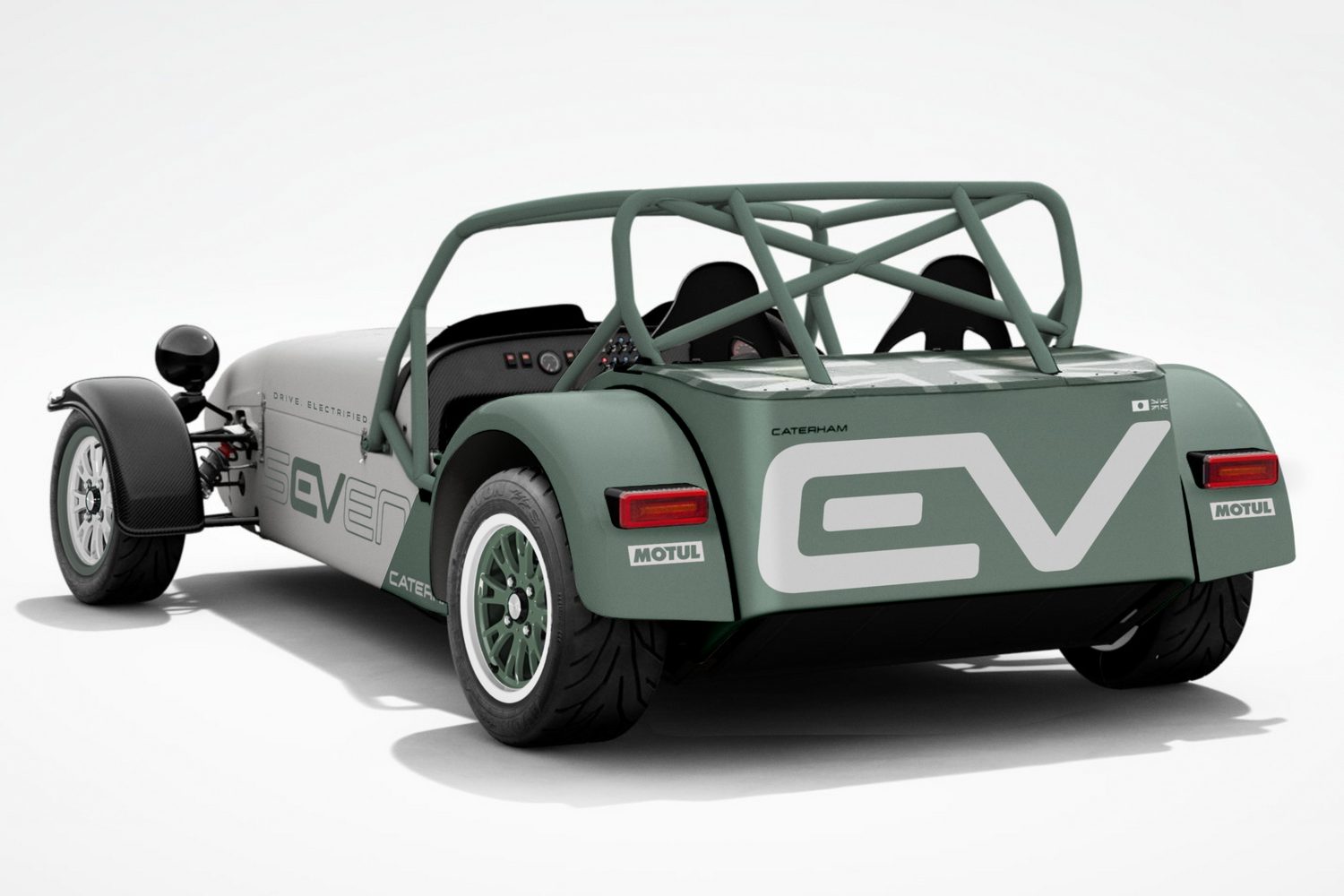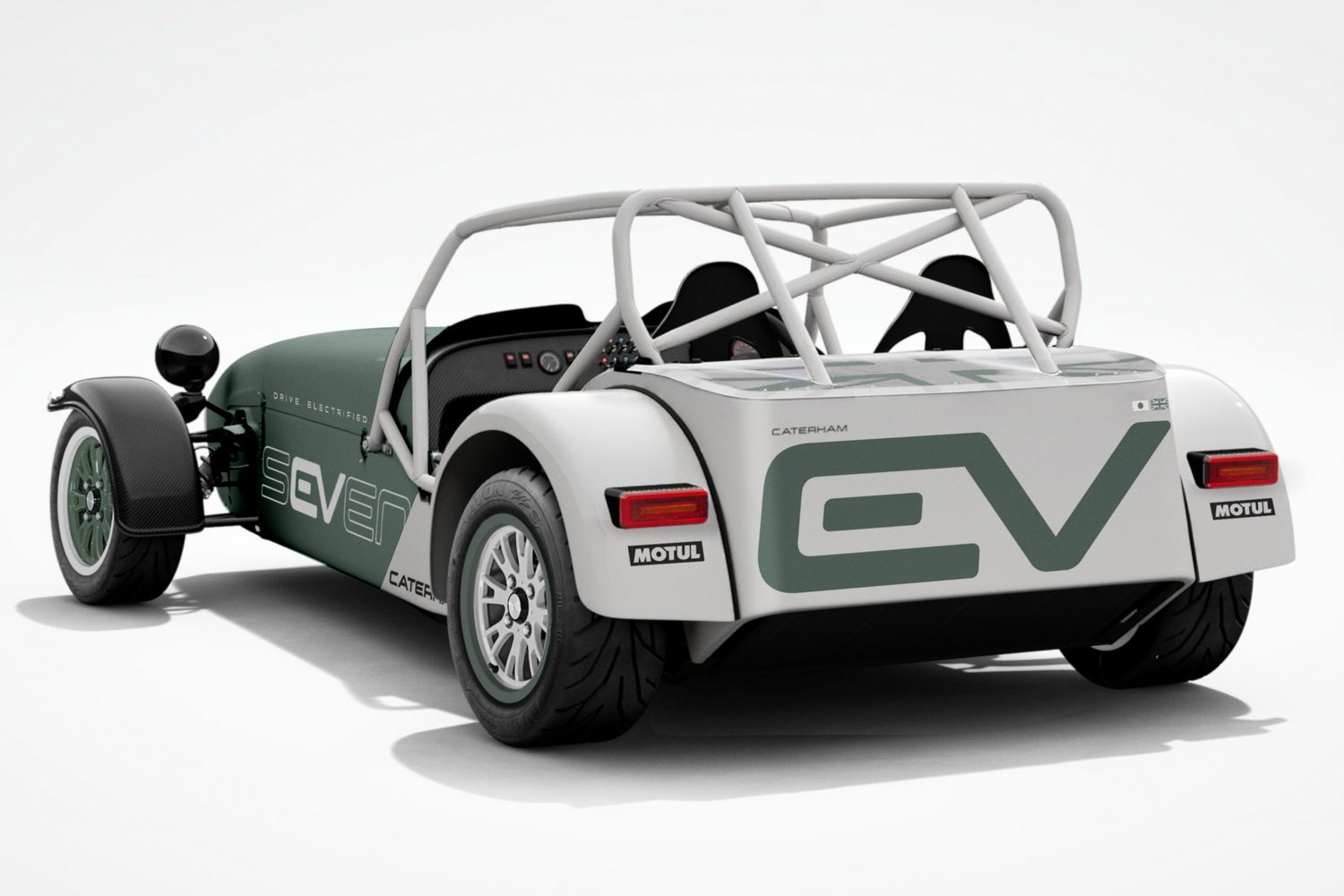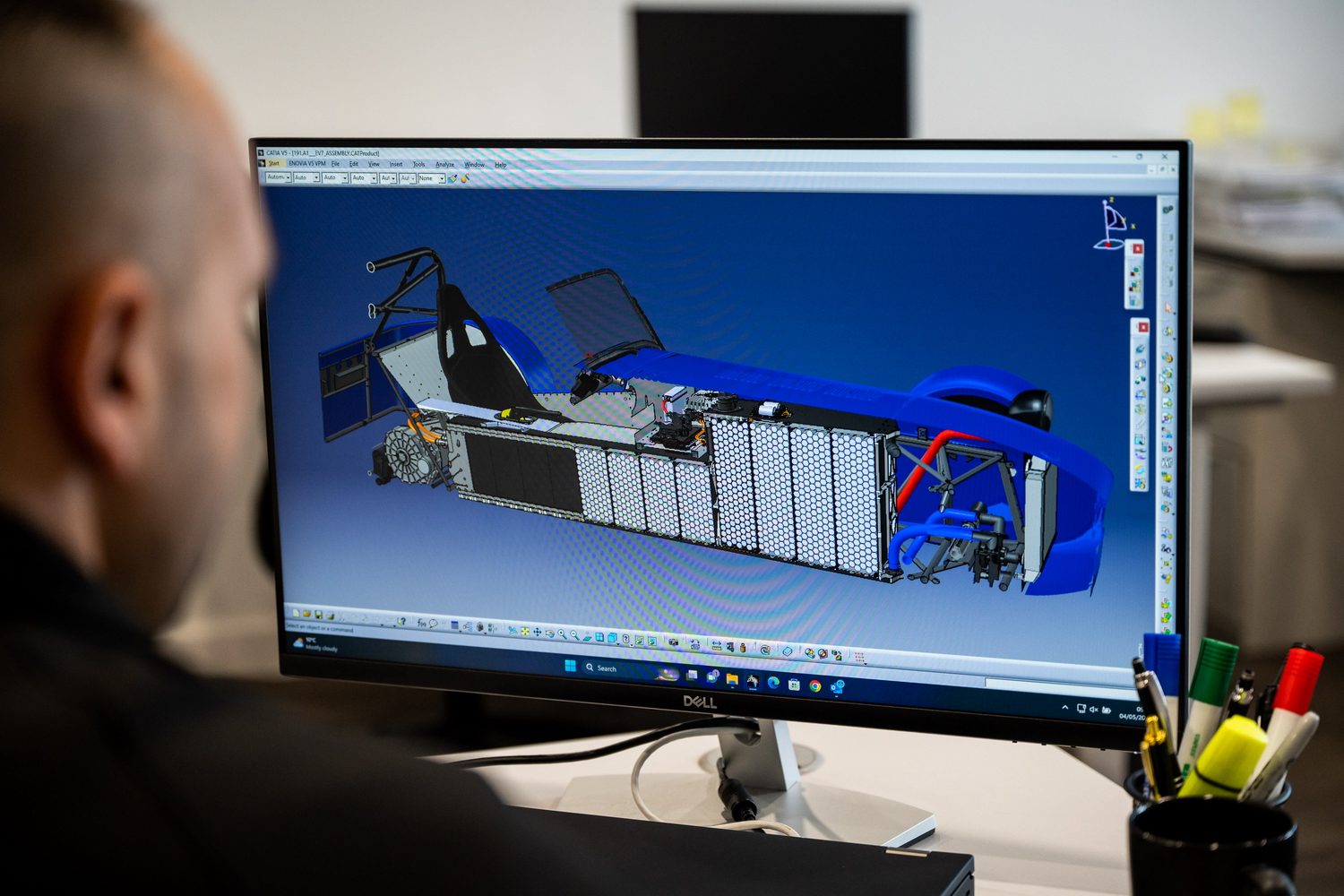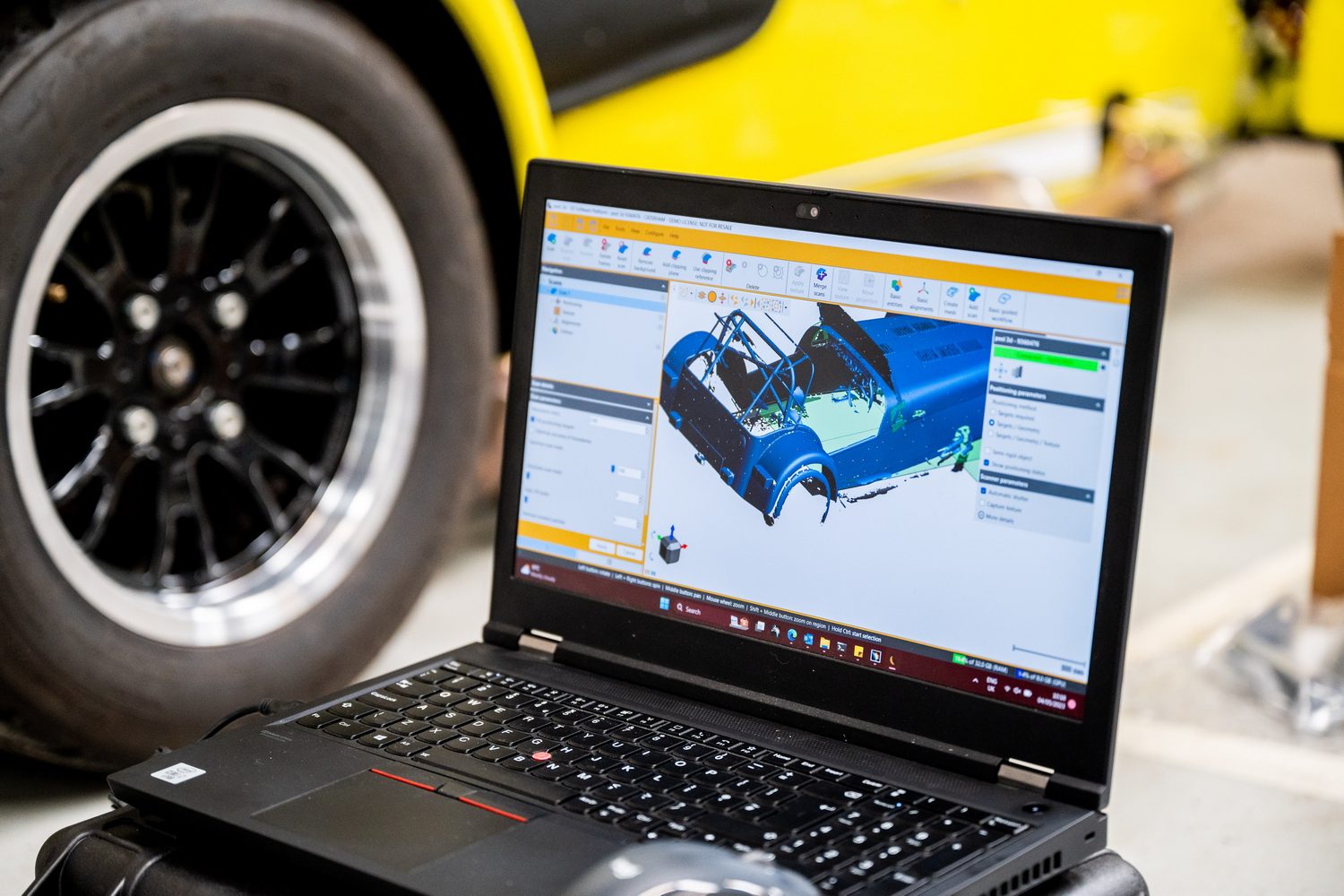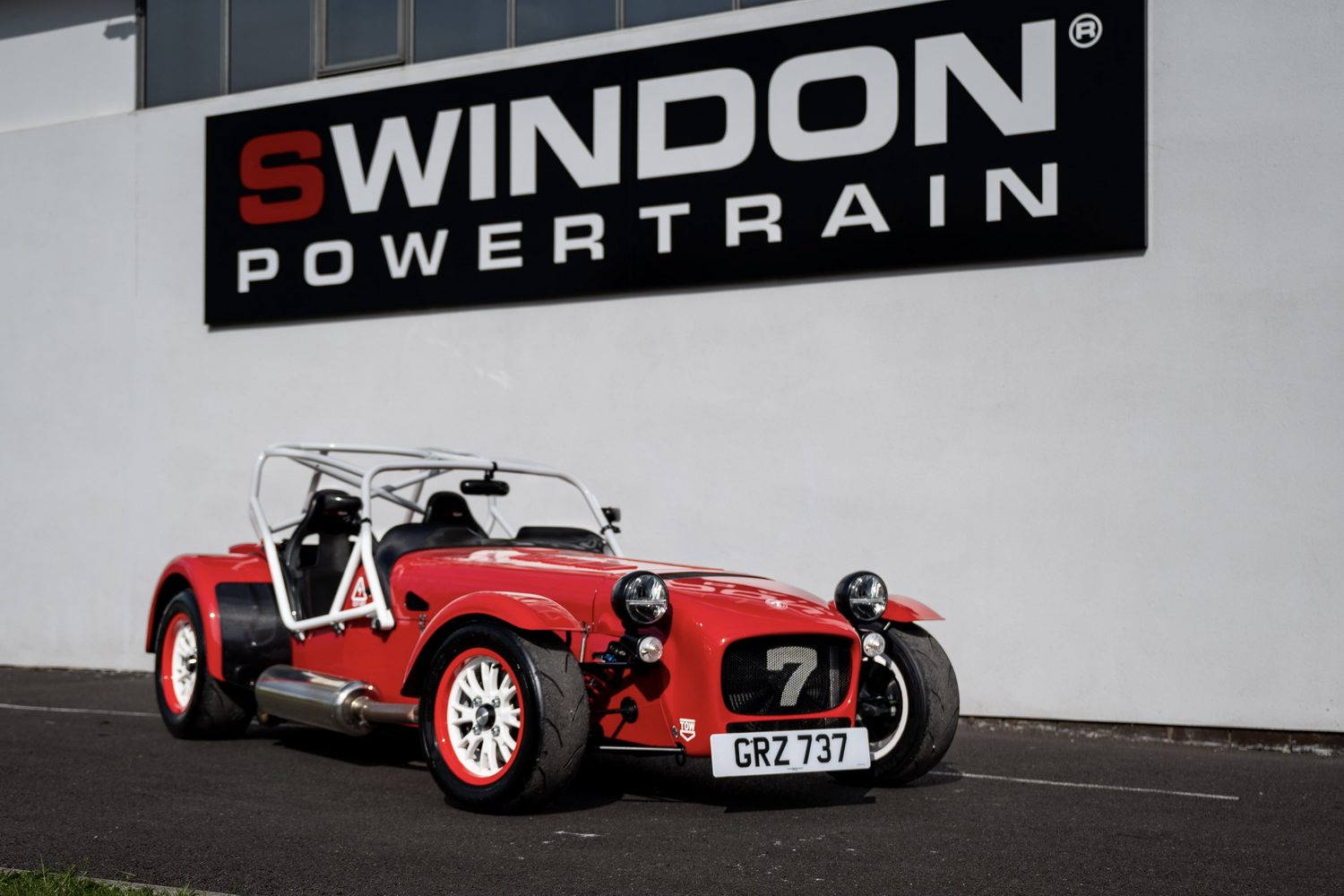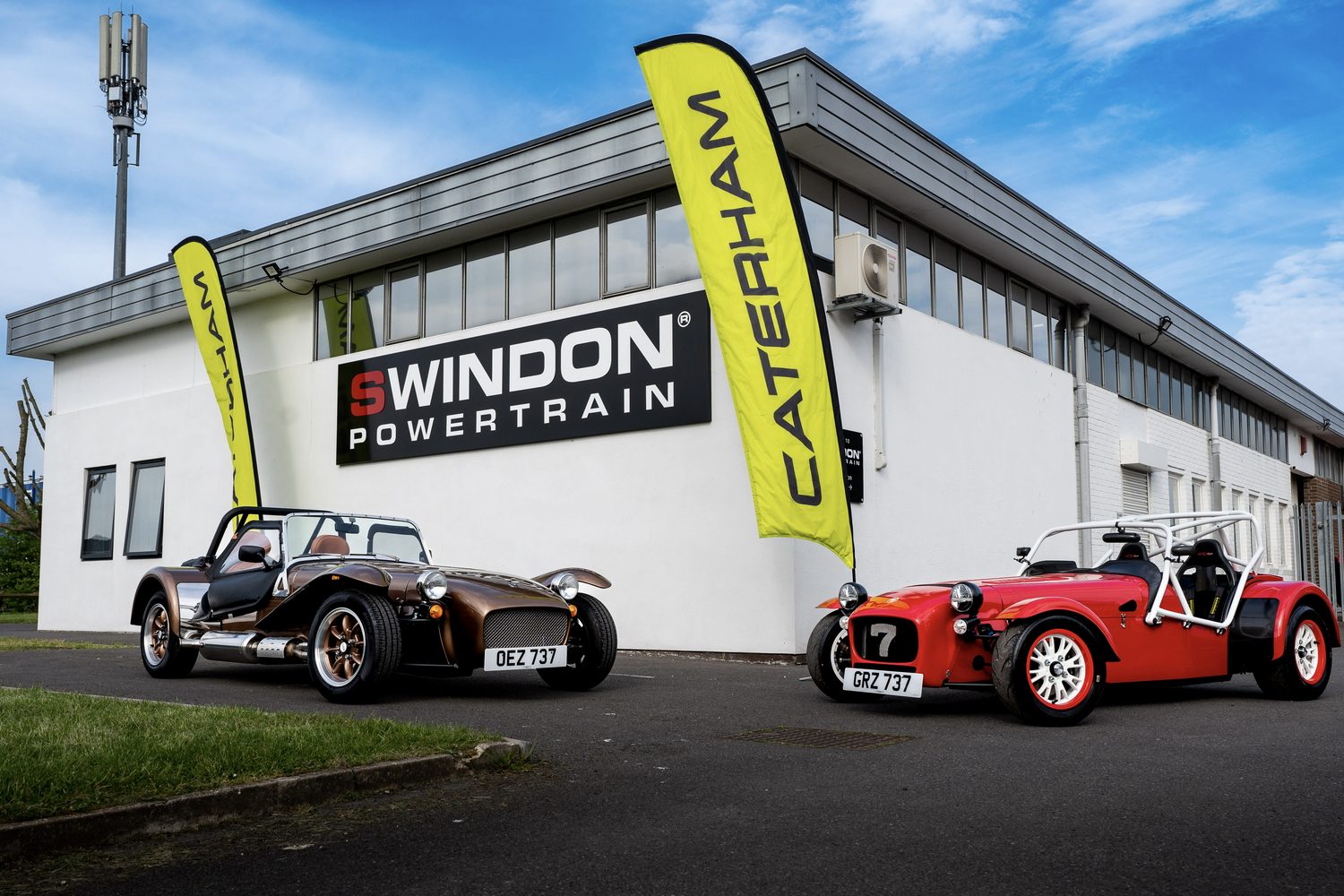Caterham, the tiny British sports car maker that has kept the flame of the original Lotus 7 alive all these years, has revealed its first all-electric model.
This is the Caterham EV 7, which is not actually a production model, but as Caterham puts it "enables [us] to move a step closer to bringing a battery electric model to market that is as driver focused as its petrol counterpart."
It's all been twin-cam petrol engines up to now
Caterhams - and their Lotus forebears - have generally been powered down through the years by compact twin-cam four-cylinder petrol engines from Ford, Opel/Vauxhall and Rover (with the occasional turbocharged three-cylinder Suzuki engine thrown in for fun).
Instead of petrol power, the EV 7 gets a battery and electric motor developed for the car by Swindon Powertrains - hitherto better known for its electric classic Mini conversions.
The Swindon setup uses an 'immersion cooled' 40kWh (useable) battery. This means it sits in a special fluid, provided by long-term Caterham technical partner Motul. The fluid is in direct contact with the cells enabling better thermal management during charge and discharge cycles. This is at the forefront of battery electric vehicle technology and, until now, has typically been employed to cool super computers that generate enormous amounts of heat.
The control of heat in the battery is critical if Caterham wants the EV to replicate the hardcore track work for which the 7 is famed. The company says that the powertrain of this experimental model has been designed around "a repeatable 20-15-20 drive cycle: the ability to drive on track for 20 minutes and recharge in 15 minutes with enough energy to drive for a further 20 minutes."
No heavier than a passenger
Bob Laishley, CEO of Caterham, said: "Any future EV model we produce must be true to the DNA of a Caterham: lightweight, fun-to-drive and driver focused. The main objective for this project is to develop a vehicle with a weight delta of no more than the equivalent of having a passenger on board. We're never going to launch a one-tonne Seven - we'd rather not do it.
"Building a Seven that's capable of a Sunday morning drive is achievable with current battery technology, but the challenge is for track use where the energy consumption is greatly increased. At the moment, immersion battery cooling is one of the best solutions in terms of coping with the rapid charge and discharge cycles that would be experienced on a racetrack," added Laishley.
In fact, the EV 7 is only 70kg heavier at the kerb than a current petrol-powered version, meaning that the all-up weight is under 700kg. That battery powers a 243hp electric motor that also produces 250Nm of torque, which should be pretty hilarious in a sub-700kg Caterham. The company estimates that the 0-100km/h time should be only slightly over four seconds, and that the car should have a power-to-weight ratio (always the critical number for the 7) of 344hp-per-tonne. The top speed is reckoned at 210km/h, mostly limited by the 7's legendarily-brick-like aerodynamics. The battery can be recharged at a maximum DC charging rate of 152kW.
Bilstein dampers
The rest of the mechanical specification is just as enticing - there's a limited-slip differential, adjustable Bilstein dampers from the Seven 420 Cup, regenerative braking and quad-piston brake calipers. There are 13-inch Apollo black alloy wheels and hyper-fast rack-and-pinion steering with just 1.93 turns lock-to-lock.
However, don't get too excited. This one is only a prototype, and not for production... yet. "We do not have plans to put EV Seven into production at this stage - it's a test bed to see how well an EV powertrain works for our customers' specific use cases. We're doing this project with our eyes wide open so that we can learn how to deliver the specific Caterham vehicle attributes necessary for a Seven: lightweight, simple and fun to drive. We're going to bring this to market at the right time, when the future generation of battery technology allows it, and that's why now is the time for us to trial the concept," said Laishley.
Raphaël Caillé, Managing Director of Swindon Powertrain Ltd, said: "Our history of working with Caterham spans more than three decades - we developed the Vauxhall engine used in the JPE [Jonathan Palmer Evolution] edition Seven in the early 1990s, and we're thrilled to be able to continue this partnership today through our work on this exciting project. The targets we've been set for low vehicle weight and battery charging speed are undoubtably ambitious, but the use of cutting-edge immersion cooled battery technology along with our own powertrain components means we're able to develop an electric Seven that maintains the core values of the original."
The EV 7 will be shown off at the Goodwood Festival of Speed in July, and it's not the only electric project on which Caterham is working - the company is also about to release only its second full-bodied model ever, after the Caterham 21 of the early nineties. This will also be electric, and it's being designed by Anthony Jannarelly, best-known for his eponymous retro-styled Jannarelly Design-1 sports car. This all-new car will be, in part, a celebration of 50 years since the Caterham company bought the intellectual rights for the original Lotus 7 from Colin Chapman, founder of Lotus.

